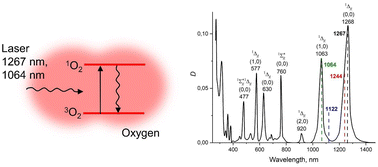Efficiency of direct photoinduced generation of singlet oxygen at different wavelengths, power density and exposure time of laser irradiation
Abstract
This work investigates the influence of laser irradiation parameters (wavelength, power density and exposure time) on singlet oxygen (1O2) generation efficiency. Chemical trap (L-histidine) and fluorescent probe (Singlet Oxygen Sensor Green, SOSG) detection methods were used. Studies have been conducted for 1267, 1244, 1122 and 1064 nm laser wavelengths. 1267 nm had the highest efficiency of 1O2 generation, but 1064 nm demonstrated almost the same efficiency. We also observed that the 1244 nm wavelength can generate some amount of 1O2. It was demonstrated that laser exposure time can generate 1O2 more efficiently than an increase of power. Additionally, the SOSG fluorescence intensity measurements method for acute brain slices was studied. This allowed us to evaluate the approach's potential for in vivo detection of 1O2 concentrations.



 Please wait while we load your content...
Please wait while we load your content...